Diaoyutai State Guest House
Address: No. 2 Fucheng Road, Haidian District, Beijing, China
Zip code: 100830
Operator: 86-10-58591188
External Liaison Office Telephone: 86-10-58591588 (Reservation)
86-10-58591599 (Sales)
Fax: 86-10-5887 3988
Website: www.chinadyt.com
Mailbox: diaoyutai@chinadyt.com
Diaoyutai State Guest House is an ancient imperial garden and modern State Guest House complex located on the east side of Yuyuantan (39 55'N 116 19'E) in Haidian District, Beijing, China. Diaoyutai State Guest House in Beijing is an important place for Chinese leaders to carry out foreign affairs activities. It is also a superstar hotel for the state to receive heads of state and important guests.
Diaoyutai State Guest House was built on the eve of National Day in 1959, and has received more than 1300 foreign heads of state and government to stay. It has become an important place for party and state leaders to engage in state affairs and foreign affairs. It has received nearly 1000 presidents, kings and prime ministers from all over the world. It is a place that attracts the attention of people and media all over the world.
Ancient Diaoyutai is one of the famous gardens in the western suburbs of Beijing. It was named after Emperor Jinzhangzong (1168-1208 A.D.) who built a platform for fishing here. The park is about 1 kilometer long in the north and south, 0.5 kilometers wide in the East and west, with a total area of 420,000 square meters, a total building area of 165,000 square meters, and a lake area of 50,000 square meters. So far, it has a history of more than 800 years. In the Qing Dynasty, Emperor Qianlong (1736-1795 AD) ordered the dredging of Yuyuantan Lake and built the Xinggong Palace here, which was taken as a royal garden. The modern state guesthouse Park was expanded by the government of the People's Republic of China from 1958 to 1959 on the basis of the ancient Diaoyutai scenic spot. It was used as a place of stay, meeting and meeting for visiting state guests.
Landmarks near Diaoyutai State Guesthouse include Naval General Hospital, State Administration of Foreign Exchange, Central Radio and Television Tower, CCTV, China Century Altar, State Administration of Taxation, Military Museum, National Bureau of Statistics, Hong Kong and Macao Office of the State Council, etc.
General situation of development
Diaoyutai State Guest House is located in the ancient Diaoyutai Scenic Area outside Fuchengmen, the western suburb of Beijing. It is about one kilometer long in North and south, about 0.5 kilometers wide in East and west, with a total area of 420,000 square meters. Diaoyutai State Guesthouse has more than ten buildings. The buildings are numbered counter-clockwise from the north of the east gate of Diaoyutai. The environment of Diaoyutai State Guesthouse is elegant and quiet. The blue water, safflower and wood-stone bridge between the pavilions and pavilions are the perfect combination of Chinese classical architectural interest and modern architectural style.
800 years ago
Historically, Diaoyutai in Beijing can be traced back to the Jin Dynasty 800 years ago, when it was located in the northwest part of the capital, called the Fish Algae Pool. The water area is very large. There is no gap between Yuyuantan and Diaoyutai. It is the place where the emperors of Jin and Yuan visited every year. Emperor Jinzhangzong liked to fish here, so he was named Diaoyutai.
In the Wanli period of the Ming Dynasty, it became a villa in the suburbs of Beijing for the princes of the Ming Dynasty. Liu Dong, a well-known scholar of the Ming Dynasty, described the landscape of Diaoyutai in his book Emperor Jing Scenery Lue as follows: "Dikes and willows are hanging around, water is on all sides, a zhuzhong center, a pavilion is built in zhuzhu, a boat is built in water, sand birds are idle, a winding house is built in, a rattan flower is built, and water is purple on one side." You see, Liu Dong paints the Diaoyutai beautifully: there are boats on the water, islands in the water core, pavilions on the island, flowers and birds, spring ripples, winter and summer are endless. The scenery is so beautiful that it tastes like gardens in the south of the Yangtze River. After the Ming Dynasty, in 1765, the second unitary year of the Qing Dynasty coincided with the prosperity of the Kangxi and Qianlong Dynasties, and it became the palace of the emperor. Emperor Qianlong specially invited people to dredge the old site of the fish Algae Pond in the Jin and Yuan Dynasties into a lake, to draw water from the West Mountain to expand the waters of Yuyuantan and Diaoyutai, and to dredge the water to the moat of Fuchengmen and Xizhimen, so as to improve the whole water system of Beijing. In 1774, Emperor Qianlong decided to build many buildings in Diaoyutai Xinggong Palace, such as Yangyuan Zhai, Tongle Palace, Qinglu Hall, Chengyi Pavilion and Wanghai Building. Emperor Qianlong also inscribed tablets for each pavilion, platform, tower and pavilion. So the clear spring and clear water of Diaoyutai can twist and turn between pavilions and pavilions and Cuilin Maomu Stone Bridge all the year round, and the Diaoyutai Xinggong Palace looks more beautiful.
In 1774, Emperor Qianlong
personally inscribed the inscription "Diaoyutai" on the poem of
Wengmen Fu on the west side of Diaoyutai. Today, the upper wall of the Wengmen
on the west side of Diaoyutai still contains the three words of Qianlong Book.
Since the founding of New China, China's diplomatic activities have developed rapidly. The central government decided to build a state hotel in Diaoyutai, 18 modern reception buildings with different design styles, more than 400 guest rooms, indoor tennis courts, swimming pools, gymnasiums and so on. It was also decided that the old pavilions and pavilions should be renovated, the original style should be maintained outside, and the interior should be modernized. The presidential suite of Building 18 is the most important and luxurious building in the complex. Its shape is pure Chinese Imperial Palace structure, with yellow glazed tile roof, green painted pillars and carved beams surrounded, and the building is three stories high, with magnificent and magnificent gold and jade. The president's bedroom in the building is even more elegant. The beds and wardrobes used are carved from rosewood. The landing palace lights are arranged around each other and are magnificent. The landing screen in front of the bedroom is carefully carved with mahogany and matched with more than ten paintings of landscape, flowers and birds, creating a strong Chinese atmosphere. Apart from the presidential building, the other 17 buildings have western villa style, Islamic style and Oriental nationality style, but they are all modern buildings. The downstairs are usually living rooms with restaurants or conference halls. On the eve of the 10th anniversary celebration of National Day in 1959, Diaoyutai State Guest House welcomed the first batch of state guests. After the completion of Diaoyutai State Guesthouse, the scenery here has been greatly improved. The original Diaoyutai Palace and the modern 18 buildings are linked together, matching ancient and modern, and beautifully. The whole state hotel has dense ancient trees, rippling green water, green grass, curved willow embankment and secluded stone bridge paths, which are just like fairyland on earth.
Showing Chinese Culture
From the beginning of its establishment, the relevant departments of the central government proposed that Diaoyutai State Guest House should be an important place to display Chinese culture of past dynasties. The State Guest House has tried its best to collect valuable cultural relics of past dynasties, including calligraphy and painting, cultural relics and traditional ancient furniture in the Ming and Qing Dynasties and has been continuously donated by collectors, contemporary famous calligraphers and painters and overseas Chinese. Thousands of cultural relics and treasures of painting and calligraphy are displayed in each building. The dishes of Diaoyutai State Guest House are the best of the eight major domestic dishes and the best of the dishes from all over the world. Up to the palace cuisine records, down to pick folk snacks, and other heads of state tastes, customs, constitute the unique flavor of Diaoyutai State Guesthouse dishes: "fresh and elegant, pure and meaningful". Thousands of foreign heads of state and government who have visited China have praised Diaoyutai cuisine satisfactorily. Not long ago, the senior chefs of the State Guest House developed a unique "court banquet", and all the guests at home and abroad who tasted it were amazed.
Historical evolution
Diaoyutai State Hotel is located in the ancient Diaoyutai scenic spot in the western suburbs of Beijing. Ancient Diaoyutai used to be the palace for emperors to visit. It is one of the famous gardens in Beijing. So far, it has a history of more than 800 years. Emperor Jinzhangzong once built a fishing platform here, so it was later known as "the emperor's fishing platform". In the early years of the Yuan Dynasty (1271-1368 A.D.), Prime Minister Lian Xixian built the villa "Wanliutang" here, which became a popular tourist attraction for a while. After Yongle in the Ming Dynasty, this is the villa of noble officials and relatives, where many scholars and bachelors wrote poems for banquets. Emperor Qianlong of the Qing Dynasty loved his beautiful scenery and designated it as a palace of passage. He built Yangyuan Zhai, Qinglu Tang, Xiaobixuan, Chengyi Pavilion and Wanghai Tower, and wrote poems and tablets. In 1958, in order to celebrate the 10th anniversary of the founding of the People's Republic of China in Chongqing and to receive some heads of state and government invited to attend the National Day in China, the State decided to choose the ancient Diaoyutai scenic spot as the site, and instructed the Ministry of Foreign Affairs to organize, plan and build the State Guest House, which was named Diaoyutai State Guest House in the name of its place. After more than a year's efforts, 17 reception buildings have been built, among which, in order to reflect the equal treatment of large and small countries and cater to China's foreign policy at that time, there was no "No. 1 building" and no "No. 13 building" in order to respect the habits of European countries. In order to respect Chinese tradition, "Fangfeiyuan" instead of "Building 17" and "Bafangyuan" instead of "Building 4". The total area of the park is 420,000 square meters, and the total building area of the museum is 165,000 square meters, of which the lake area is 50,000 square meters. On the eve of the celebration of the tenth anniversary of the National Day of the People's Republic of China in 1959, the first batch of state guests were welcomed here. Since then, the State Guest House has received visiting heads of state and government as well as world renowned persons, and has become an important place for Party and state leaders to engage in foreign affairs.
Royal Gardens
Emperor Zhang Zong of the Jin Dynasty (1190-1208 A.D.) Wan Yan Jing once built a fishing platform here, and "Diaoyutai" was named for it. So far, it has been more than 800 years. The Old News Examination under the Sun: "Diaoyutai is located in Xilixu of Sanli River, which is also an old relic of Dajin Period. There are springs under the stage, which gush out and sink into pools, and their water will not be exhausted till winter." "Emperor Beijing Scenic Scenery": "Ten miles south of the city gate, garden village, ancient garden. Afterwards, Pingchou is now the same. Jinwangyu Diaoyutai, Taiqi, Yuqian Yuyuantan and Jinchi. Spring gushing out, ancient and modern people because of it. Yu Taiyan, Diaoyan, Diaoyutai by name." In the twenty-eighth year of Qianlong in the Qing Dynasty (1763 AD), the old beach of the Jin Dynasty fishalgae pond was dredged into a lake, which drew the water of fragrant mountains and led to the moat outside Fuchengmen. The lake was called "Yuyuantan". In the thirty-ninth year of Qianlong, the Diaoyutai was built, and the emperor inscribed "Diaoyutai".
Construction of National Hotel
In order to celebrate the 10th anniversary of Chongqing's founding, the Government of the People's Republic of China welcomed foreign heads of state and government who came to China to participate in the National Day. In 1958, the Government of the People's Republic of China selected the ancient Diaoyutai Scenic Area and instructed the Ministry of Foreign Affairs to organize, plan and build the State Guest House, which was named Diaoyutai State Guest House. After more than a year's efforts, 17 reception buildings were built in 1959, all of which are two-storey green brick and red tile buildings. Starting from the Hunan side of the center, along the counter-clockwise direction, from Building No. 1 to Building No. 18, Diaoyutai State Guest House was opened on the eve of the National Day celebration in 1959, and has been expanded and repaired since then. Diaoyutai State Guesthouse has quiet and elegant environment. There are shade flowers, trees and stone bridges between the terraces and pavilions. Classical sentiment and modern architecture are harmoniously integrated.
Cultural Revolution
At the beginning of 1966, Peng Zhen (then the leader of the Five-Person Group of Cultural Revolution) organized a writing group here to draft the Outline of February. During the Cultural Revolution, it became the office of the Central Cultural Revolution Group (Building 14, Building 16), while Kangsheng (Building 8), Chen Boda (Building 15), Jiangqing (Building 8, Building 11), Zhang Chunqiao, Yao Wenyuan (Building 9) and Guan Feng also concentrated here, so it became the two-in-one residence of the members of the Central Cultural Revolution Leading Group. Because the Central Cultural Revolution Group is the birthplace of the Cultural Revolution, and in the leading position of the movement, it even replaced the Political Bureau of the Central Committee. It is in the core circle of power with the State Council and the Central Military Commission. The decree was issued from then on, visitors from inside and outside were interviewed here, and behind-the-scenes transactions were finalized here. All political forces shuttle, compete here, communicate well, or engage in conflict.
The Diaoyutai was surrounded by a fence made of bamboo poles painted with green paint, and houses and trees could be seen in it. In 1966, the fence was rebuilt and a power grid was installed on the fence. There is a gate to the East and a gate to the north of the wall. In the east gate is a rockery; in the north gate is built a large wall, covering the sight of pedestrians. The wall was painted with red paint, and gold letters with flying strokes were piled up: "Serve the people". Installed along the coast of the East Lake with burr wire mesh, the original tourists rarely visit here more profound. Its guards are in charge of the first and second branches of the Central Security Bureau.
After the Ninth National Congress, the influence of the Central Cultural Revolution Group faded out gradually, and the political operation became more and more normal. This place became the place where the members of the Gang of Four lived together. Later Wang Hongwen lived in Building 16, where members of the Political Bureau, such as Ji Dengkui, Chen Yonggui and Wu Guixian, who had been promoted during the Cultural Revolution, also lived. In addition to the consistency of political interests, it also increases the convenience of their contacts and running-in. Therefore, Diaoyutai has successively become the synonym of the Central Cultural Revolution Group and the Gang of Four. Diaoyutai, as a geographical noun, has important political symbolic significance.
In 1975, due to Chen Yonggui's request to move out of the Diaoyutai, he moved to four old courtyards at the intersection of Dongcheng District. Mao Zedong instructed, "Very good. There is no fishing in Diaoyutai." So the members of the Political Bureau of the Central Committee who lived in Diaoyutai moved away one after another. Only after Mao Zedong's death in 1976 did Jiang Qing move to the Central South China Sea.
After the Cultural Revolution
In 1980, Diaoyutai State Guesthouse was officially opened to the public. The one-day accommodation fee is RMB 2000-3000. According to the market quotation provided by reception, standard rooms (cheapest) cost $298 a day/night and presidential suites cost $3998 a day/night.
General situation of
Architecture
The meeting of the heads of the six-party talks between China, the United States, Russia, Korea, Japan and Korea, hosted by China, aimed at resolving the nuclear issue on the Korean Peninsula, was also held in Fangfeiyuan.
Building two
The second building is west of Diaoyutai Central Lake and south of Cherry Garden. It is adjacent to Presidential Building No. 18. There are 27 sets of group Leaders'suites, luxury suites, ordinary rooms and standard rooms, large and small meeting halls, banquet halls and four seasons halls in the building. The building not only receives various delegations and tour groups, hosts small and medium-sized banquets, but also receives large-scale government delegations in cooperation with the President's Building No. 18.
Building three
The third building is located in the center of the State Guest House, which is adjacent to the club in the north, surrounded by lakes, flowers and trees, and has a beautiful environment. Indoor banquet hall, large and small living rooms and luxury rooms are ideal comprehensive reception buildings.
Club
Located in the northeast of the hotel, the club integrates recreation, recreation and catering meetings. It has swimming pool, gym, bowling, billiards, tennis hall, chess and card room, table tennis, bar, sauna, beauty and large buffet, press conference and other service facilities.
Bafangyuan (Building 4)
Located in the northeast corner of the hotel park, Bafangyuan was the place where Premier Zhou Enlai worked and met with foreign guests.
Building five
Building 5, located in the north of the hotel park, is the venue for many national events. Building 5 has 24 sets of delegation Leaders'suites, luxury suites, ordinary suites and standard rooms, including meeting hall, negotiation hall, banquet hall and 100 people's hall. National leaders often hold state events here. Premier Li Peng presented the CE Certificate to Mr Tung Chee-hwa of the HKSAR at that time.
Building six
Building 6 is located in the northwest corner of Diaoyutai State Guesthouse. The Yuyuantan River flows through the front of the building. Through the dense woods, a pool of blue water is visible.
Building seven
After renovation, the interior of Building 7 is European style. There are 14 sets of Deluxe suites, deluxe suites and standard rooms. Looking out through the spacious banquet hall is a pleasant garden.
Building eight
There are 27 sets of Deluxe suite, Deluxe suite, ordinary suite and standard guest rooms in Building 8. There are large and small meeting halls and banquet halls.
Building nine
Located in the center of the hotel, Building 9 is in European style, adjacent to Fangfei Garden and north to Central Lake. It is suitable for holding various small banquets and conferences, and also an ideal villa for office and living.
Building ten
Building 10 has 23 Deluxe suites, Deluxe suites, ordinary suites and standard rooms, with large and small meeting halls, halls, banquet halls and four seasons halls. The Chinese and Western architectural style is the ideal place for holding all kinds of small and medium-sized banquets.
Building eleven
The eleventh building has 26 standard rooms, Deluxe suites, ordinary suites and deluxe suites. It also has large and small meeting halls and banquet halls.
Building twelve
Building 12 is located in the middle of the south of the hotel park, opposite Wangfangfei Garden. There are 17 presidential suites, luxury suites, ordinary suites and standard rooms. There are also meeting hall, negotiation hall, banquet hall and four seasons hall. In the meeting hall, Liu Haisu's giant Chinese painting "How Beautiful Areas Are Rivers and Mountains" was painted. The Four Seasons Hall is spacious and bright, with rockery, stream, spring, pond water and precious flowers and trees. Building 12 used to be Mao Zedong's residence, where U.S. President Reagan and British Prime Minister Mrs. Thatcher stayed.
Building fourteen
The 14th floor is located in the southeast corner of Diaoyutai, across the lake from the ancient buildings, adjacent to the Diaoyutai International Convention and Exhibition Center. This building has a banquet hall, negotiation hall and luxury guest room. It is a comprehensive reception building.
Building fifteen
Building 15 has 17 sets of delegate suites, luxury suites, ordinary suites and standard rooms, and large and small meeting halls and banquet halls. "Danruoyuan" is the garden of Diaoyutai State Guest House, which is connected with the fifteenth floor. Danruo is another name for pomegranate. Pomegranate trees are planted everywhere, so they are called Danruoyuan. Ring Pool Quqiao, Heavy Pavilion and Liangxie, Secret Path Corridor, Green Grass Fangfei, Small Waterfalls and Flowers, Goldfish Watering. Du Mu's poem "May pomegranate blossoms are as red as fire..." The inscriptions and inscriptions of famous calligraphers are printed on halls or stones. At night, lanterns hang high, palace lights shine, floodlight mapping, not inferior to the fun of the day.
Building sixteen
The sixteenth floor is located at the east gate of Diaoyutai, with banquet hall, living room and luxury guest room. It is a comprehensive reception building.
Fangfei Garden (Building 17)
Diaoyutai State Guest House has unique advantages in holding large-scale conferences, press conferences, wine parties and banquets.
Building eighteen
Building No. 18 is a Ming-style building, located in the center of Diaoyutai, on the side of central Hubei. There are 25 sets of presidential suite, luxury suite and standard rooms in Building 18. Built-in waiting room, negotiation hall, banquet hall and Four Seasons Hall. Chinese presidential suite is antique, imitative Ming style decoration and built-in, with royal style. The appearance of elegant and luxurious ancient buildings is magnificent. Yuanmingyuan Gold Bronze Lion is located on both sides of the gate. Outside the building is the beautiful scenery of Chinese ancient gardens. The vast majority of foreign heads of state or leaders are staying in Building 18.
Yang Yuan house
In the palace of the Qing emperor, "Yangyuan Zhai" was inscribed by Emperor Qianlong. It has a meeting hall and a banquet hall. The banquet hall was golden and brilliant. The grandson of Emperor Qianlong was hanging in the banquet hall, copying his calligraphy "You Huai Tuo Quanshi, Happiness in Sangma". Yangyuan Zhai is an important place for state leaders to hold important foreign affairs activities.
imperial garden
Adjacent to Yangyuan Zhai, the palace of the emperor in ancient times is the courtyard of Diaoyutai. The courtyard is full of ancient trees, green bamboo, flowers and plants, reflecting the vermilion corridor, meeting hall, banquet hall, luxury suite and standard guest room. It is not interesting with modern decoration.
Historical witness
Initial stage of construction
On the eve of the 11th anniversary of the founding of New China in 1959, politicians invited to attend the 10th anniversary celebration of the founding of New China gradually stayed in Diaoyutai State Guest House. Delegations from 12 socialist countries each occupy one building. The Soviet delegation was led by Khrushchev. In front of the gate of Building 18, a memorial tree symbolizing peace and friendship was planted. It was a white pine tree. The North Korean delegation was led by Kim Il Sung, who stayed in the 12th floor of Diaoyutai State Guest House. Kim Il Sung and Chinese receptionists planted evergreen pine trees in front of the building, symbolizing the friendship between China and the DPRK forever. Ho Chi Minh stayed in Building 11 of Diaoyutai State Guest House, northwest of Building 12. The Romanian delegation led by Ceausescu lives on the 8th floor. Other delegations from Eastern European countries, such as Albania and Bulgaria, also planted trees in front of their buildings.
Leader
Since the 1960s, the leaders of Mao Zedong, Liu Shaoqi, Zhou Enlai and Peng Zhen of the Central Committee of the Communist Party of China sometimes went to Diaoyutai State Guest House for meetings or temporary accommodation. Every time Chairman Mao comes to Diaoyutai State Guest House for a meeting or a small stay, it is on the 12th floor. But when he stayed in Building 12, he never stayed in the top VIP bedroom on the second floor, but in the suite of VIP attendants on the first floor. This suite has only a small hall, a bathroom and a bedroom. Premier Zhou is accustomed to living in Building 5, where he not only rests, lodges and works, but also receives foreign guests and handles many foreign affairs. Liu Shaoqi goes to Diaoyutai State Guest House and usually lives in Building 11. Peng Zhen came here to live in Building 14.
Oriental First Pavilion
Diaoyutai State Guest House is under the Ministry of Foreign Affairs of China. The courtyard is full of green grass and clear lakes. There are sixteen reception buildings and an ancient building complex scattered in the courtyard. There are more than four hundred guest rooms, which have the reputation of "the First Oriental Pavilion". Nowadays, Chinese friends are all over the world, and Diaoyutai's guests are "globalized". On August 23, 2006, Diaoyutai ushered in the 1000th foreign dignitaries, with an increase of more than 200 in just over a year. Some of the "classic" events that took place here are remarkable; there are countless anecdotes, which are widely circulated. In February 1972, U.S. President Nixon came to China on a historic "ice-breaking trip". He held talks with Chairman Mao Zedong and Premier Zhou Enlai. The place to stay is Diaoyutai Building 18. On the banquet, Nixon showed off his practice of chopsticks for more than half a year. Previously, Kissinger lived in Building 6 not far away when he visited China secretly to pave the way for him. In September 1982, Mrs Thatcher, British Prime Minister, visited China and stayed on the 12th floor of Diaoyu Dai. From here she went to the Great Hall of the People to meet Deng Xiaoping and fell on the steps in front of the Hall. In the 1980s, Sino-British, Sino-Portuguese negotiations on the future of Hong Kong and Macao and the normalization of Sino-Soviet relations were also held in Diaoyutai. In December 1999, President Jiang Zemin met Yeltsin on his last visit to China as President of Russia at Diaoyutai State Guest House. They took a walk in the park together, leaving many rare and relaxing pictures. Prior to that, in 1992, after negotiations, the two sides signed the communique on the establishment of diplomatic relations at Fangfeiyuan on the 17th floor. Starting from August 2003, the world-renowned Six-Party Talks were held at Diaoyutai State Guest House in Beijing. After many setbacks, they finally made a breakthrough in 2007 and adopted the "2.13" common document. On the evening of October 3, 2007, the second phase of the Sixth Round of Six-Party Talks issued the "Second Phase Action for Implementing the Joint Statement". For the Six-Party Talks, President Hu Jintao and Premier Wen Jiabao are highly concerned and often listen to reports from Chinese officials at the first time.
Among the numerous Hotel buildings, building 12 and building 18 are the most prominent, because they are specially designed to receive foreign heads of state and government leaders. Former US President Nixon's first visit to China was to live in Building 18, where Building 12 also stayed. Therefore, this building is jokingly called the "Head of State Building".
Social evaluation
Diaoyutai has a history of more than 800 years. The emperor of the Jin Dynasty built a platform for fishing. Emperor Qianlong of the Qing Dynasty was especially fond of it. After the founding of New China, the use of Diaoyutai changed greatly, from the imperial palace to the residence of visiting leaders. Diaoyutai not only receives senior officials from various countries, but also is often used as a place for various forums and talks.
According to the Chinese cultural characteristics, every building in Diaoyutai should have a name full of cultural connotations. However, each villa building is numbered with Arabic numerals. It has a total of 18 rows, which seems to lack talent and feels totally unlike Chinese style. In order to respect foreign habits, there are no No. 1 and No. 13 Building numbers. In order to respect Chinese tradition, Fangfei Garden is replaced by No. 17 Building and Bafang Garden is replaced by No. 4 Building. No name, just the number of building guests, the mystery of the number gives people and the mystery of Chinese diplomacy is in the same line.
Diaoyutai is the witness of China's secret diplomatic activities, of which Building 14 is the greenhouse for the establishment of diplomatic relations between Korea and China. In May 1992, South Korean diplomats came to China secretly through a third country in groups, opening the opening of diplomatic relations between South Korea and China at Building 14 of Diaoyutai State Guest House. Less than three months later, the foreign ministers of the two countries signed the communique on the establishment of diplomatic relations at Fangfeiyuan on the 17th floor. There is a very large banquet hall in Fangfei Garden. According to the staff, there are innumerable conversation spaces where you can sit and talk, stand and even talk in the bathroom. The world-renowned Six-Party Talks were held here.
Diaoyutai has received more than 900 heads of state, of which more than 600 are staying in Building 18, where many anecdotes about China's diplomacy are treasured. Building 6 opens a new chapter in China's diplomacy. When Kissinger visited China secretly in 1971, he was there to consult with China on Nixon's visit.
There are four major cuisines in China: Shandong, Guangdong, Sichuan and Huaiyang. Those who have eaten Diaoyutai cuisine say there are five major cuisines in China. Diaoyutai cuisine has the characteristics of low fat, low cholesterol, low calorie and high protein. It is different from traditional Chinese food, which is very light and healthy.
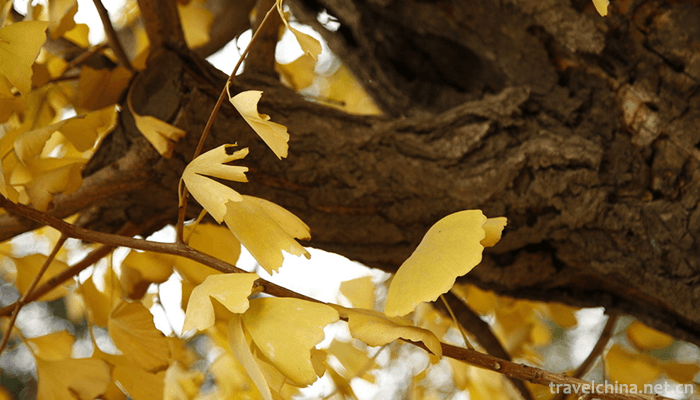
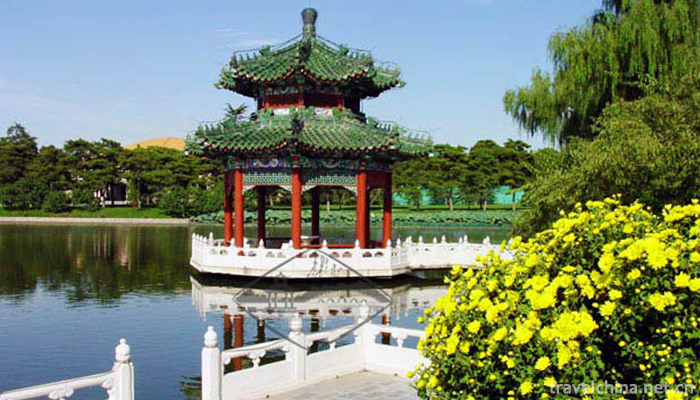


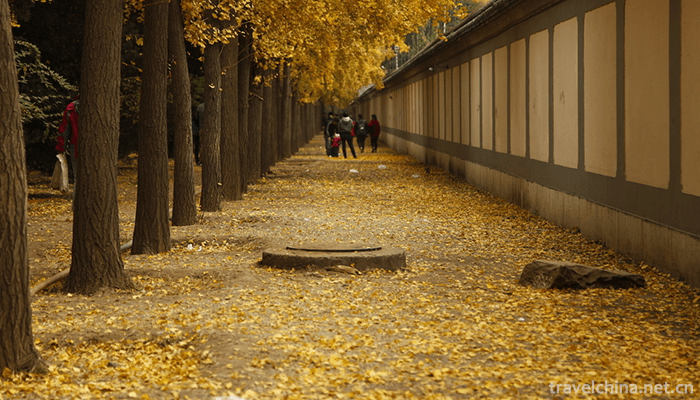
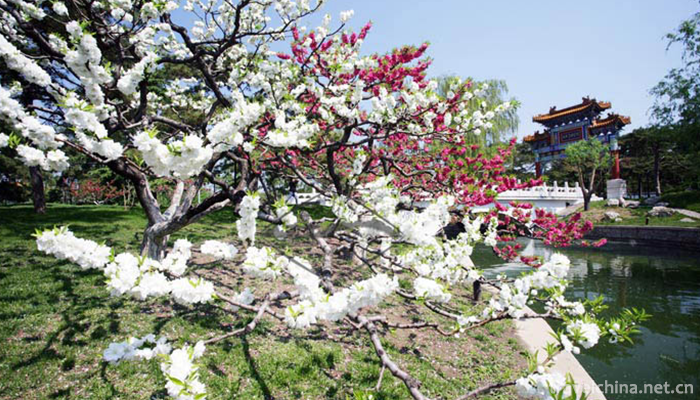
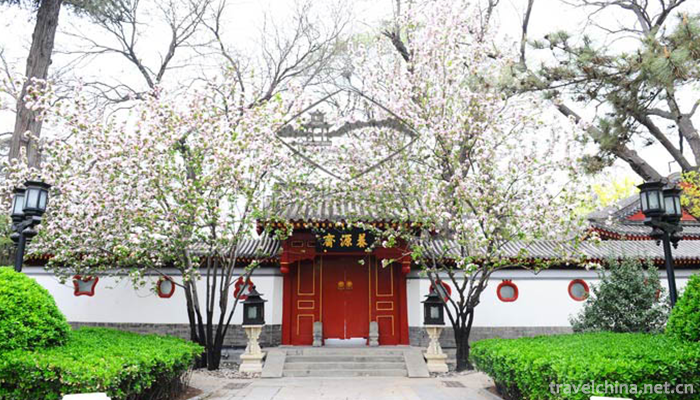

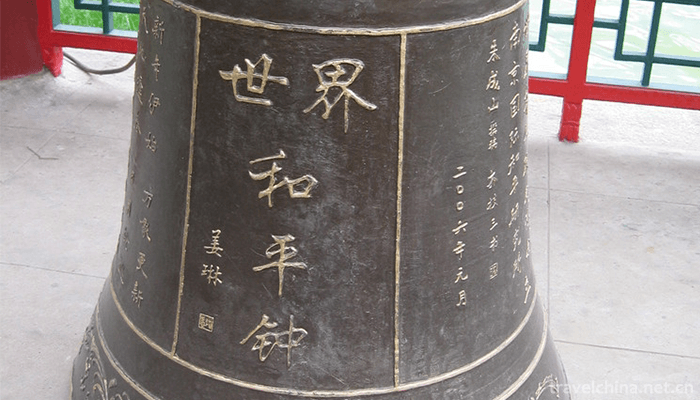
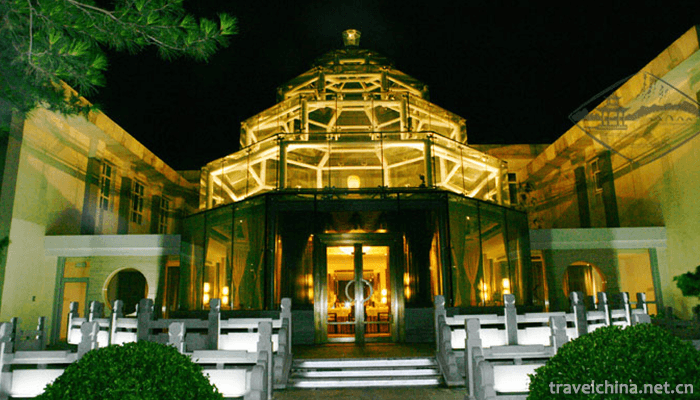
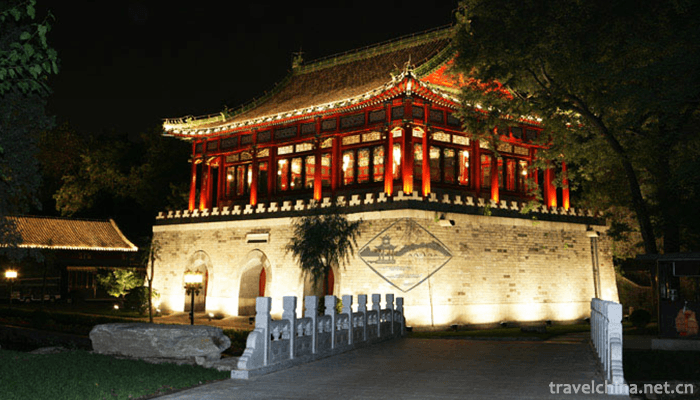

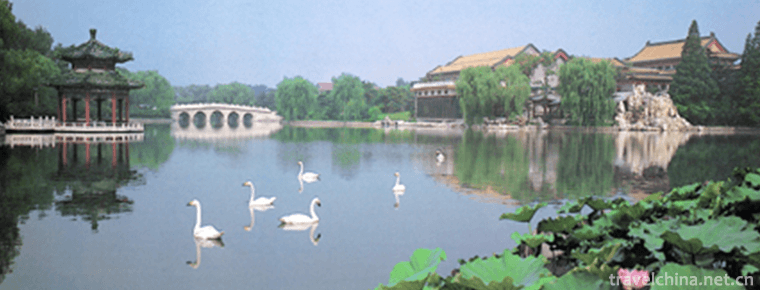
-
2.The Wudalianchi Scenic Area
Wudalianchi Scenic Spot: National AAAAA Scenic Spot, World Geological Park, World Human and Biosphere Reserve, International Green List
Time 2018-12-05 -
3.Zepkin Lake Yang National Forest Park
Zepujin Lake Poplar National Forest Park is located 36 kilometers southwest of Zepu County in Yasidun Forest Farm. It is located on the upper edge of the Yerqiang River alluvial fan
Time 2018-12-12 -
4.Badachu Park
Located at the south foot of Beijing's famous Xishan scenic spot, Badadu Park is a national AAAA-level scenic spot. It is the first batch of key cultural relics protection units in Beijing after the f
Time 2018-12-24 -
5.ancient game of kicking a ball
Cuju, also known as "Biju", "Cuju", "Cuju", "Cuyun", "Cuyun", "building a ball" and "kicking a round", has the meaning of "Cu
Time 2019-04-22 -
6.Two strands
Erguxian is an ancient traditional opera, which was formed in Song Dynasty and has a history of more than 500 years. The two-strand string is evolved from folk minor,
Time 2019-04-28 -
7.Li nationality costumes
Li costumes are mainly made of island cotton, hemp, kapok, bark fiber and silk. In ancient times, some places also used the bark of twig or bloody throat trees as clothing materials. This kind of dres
Time 2019-05-12 -
8.Folk embroidery
Folk embroidery is a traditional Chinese handicraft, which integrates traditional folk art, folklore knowledge and traditional handicraft. It has high ornamental value, practical value and collection
Time 2019-06-05 -
9.Uygur Daolang Maxi Refu
Maigaiti County is located in the southwest of Xinjiang Uygur Autonomous Region. It is a typical Uygur inhabited area. About 89% of the population is Daolang Uygur who can sing and dance well. Among t
Time 2019-06-26 -
10.Smelting and Casting Techniques of Pig Iron in Yangcheng
Yangcheng pig iron casting technology was invented in the 6th century BC. Yangcheng pig iron smelting and casting technology in the smelting and casting process first crushed the ore, then roasted at
Time 2019-07-10 -
11.Guangdong embroidery
Guangdong embroidery is the general name of Guangzhou embroidery (Guangzhou embroidery) and Chaozhou embroidery (Chaozhou embroidery). It is one of the four famous embroidery in China.
Time 2019-07-16 -
12.Yibin social security
By the end of 2019, there were 1.0302 million people participating in the basic endowment insurance for urban employees, an increase of 25500 over the end of the previous year, and 1.921 million people participated in the basic endowment insu
Time 2020-12-18